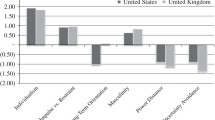Abstract
Public understanding of science (PUS) is an area of research using contributions from various areas of expertise but focusing on the borders between science and society. It is a recent but growing area of research with its own strengths and limitations. The first phase of its development involved attitudinal surveys in many countries to measure the public’s scientific knowledge and probe the public’s attitude towards science and scientists. In many countries, regular survey studies have underpinned the allocation of special budgetary provisions. Later, researchers refined their methodology and developed new analytical tools and techniques to gain deeper insights into PUS. In India, researchers from the National Institute of Science, Technology and Development Studies (a unit of the Council of Scientific and Industrial Research) have worked since 1989 on techniques for surveys suitable for developing countries. As a consequence of that research, the research group has proposed a culturally sensitive model for evaluating the data. This chapter describes the historical background of the development of PUS research, with special reference to that simple but effective ‘cultural distance’ model. The authors confirm that the method of measuring cultural distance can be applied to various datasets to draw meaningful conclusions.
Access this chapter
Tax calculation will be finalised at checkout
Purchases are for personal use only
Similar content being viewed by others
References
Aslam M (2012) A diagramatic study of different models of mass-communication. Global Journal of Human Social Science, Arts & Humanities 12(13). https://globaljournals.org/GJHSS_Volume12/4-A-Diagramatic-Study-of-Different.pdf
Bensaude-Vincent B (2001) A genealogy of the increasing gap between science and the public. Public Underst Sci 10:99–113
Bhattacharya N (1983) The cultural heritage of India: vol. IV: The religions. The Ramakrishna Mission, Institute of Culture, Calcutta
Campbell G (1963) The philosophy of rhetoric. Bitzer LF (ed). Southern Illinois University Press, Carbondale
Chin W (2019) Technology, war and the state: past, present and future. International Affairs, July, 95(4):765–783
Dow JPG (2014) Proof-reading Aristotle’s Rhetoric. Archiv Für Geschichte Der Philosophie 96(1):1–37
Durant J (1993) What is scientific literacy? In: Durant J, Gregory J (eds) Science and culture in Europe. Science Museum, London, 129–137
Durant J, Bauer M (1992) British public perception of astrology: an approach from the sociology of knowledge. Paper presented at annual meeting of the American Association for the Advancement of Science, Chicago.
Geertz C (1999) A life of learning. Charles Homer Haskins Lecture for 1999, occasional paper no. 45, American Council of Learned Societies
Godin B, Gingras Y (2000) What is scientific technological culture and how is it measured? A multidimensional model. Public Underst Sci 9:43–58
Haugsbakk G (2013) From Sputnik to PISA shock—new technology and educational reform in Norway and Sweden. Education Inquiry 4(4). https://www.tandfonline.com/author/Haugsbakk%2C+Geir
Hughes J (2003) The Manhattan Project: big science and the atom bomb. Columbia University Press
Huxster JK, Slater MH, Leddington J, LoPiccolo V, Bergman J, Jones M, McGlynn C, Diaz N, Aspinall N, Bresticker J, Hopkins M (2018) Understanding ‘understanding’ in public understanding of science. Public Underst Sci 27(7):756–771
Lee O, Fradd SH, Sutman FX (1995) Science knowledge and cognitive strategy use among culturally and linguistically diverse students. Journal of Research in Teaching 32(8):797–816
Levis FR (1962) Two cultures? The significance of CP Snow. Chatto and Windus, London
Miller E (2010) Linguistic politics: creating a communication canon post World War II. McNair Journal, 6. https://scholarworks.boisestate.edu/mcnair_journal/vol6/iss1/11/
Miller S (2001) Public understanding of science at the crossroads. Public Underst Sci 10:115–120
Petersons A, Khalimzoda LI (2016) Communication models and common basis for multicultural communication in Latvia. Proceedings of the International Scientific Conference: Society. Integration. Education, 27–28 May, IV:423–433
Raza G, Singh S, Dutt B, Chander J (1996) Confluence of science and people’s knowledge at the Sangam. Ishtihaar, New Delhi
Raza G, Singh S, Dutt B, Wahid A (1991) Prototypes of the forms of scientific cognition: a survey of cultural attitude to natural phenomena. NISTADS reports I and II
Raza G, Singh S, Kumar PVS, Dabiru L (2020) Pulse of the pandemic: a sudden surge in scientific attitude during Covid-19 crisis. Anhad and PMB Foundation
Raza G, Dutt B, Singh S (1997) Kaleidoscoping public understanding of science on hygiene, health and plague: a survey in the aftermath of a plague epidemic in India. Public Underst Sci 6:247–267
Rossiter MW (1985) Science and public policy since World War II, Osiris, Historical Writing on American. Science 1:273–294
Sardar Z, Loon BV (1997) Introducing cultural studies. Totem Books, New York
Scheufele DA, Krause NM (2019) Science audiences, misinformation, and fake news. Proceedings of the National Academy of Sciences of the USA, 16 April, 116(16):7662–7669. https://www.ncbi.nlm.nih.gov/pmc/ articles/PMC6475373/citedby/
Shannon CE (1948a) A mathematical theory of communication, Bell System Technical Journal, July, 27(3):379–423
Shannon CE (1948b) A mathematical theory of communication. Bell System Technical Journal, October, 27 (4):623–666
Snow CP ([1959] 1993) The two cultures. Cambridge University Press, Cambridge
Stamm KR, Clark F, Eblacas PR (2000) Mass communication and public understanding of environmental problems: the case of global warming. Public Underst Sci 9:219–237
Tylor B ([1871] 1924) Primitive culture, 7th edition. Brentano’s, New York
Wynne B (1995) Public understanding of science. In: Jasanoff S, Markle GE, Peterson JC, Pinch T (eds) Handbook of science and technology studies. Sage, London, 361–388
Zalta EN (ed.) (2010) The Stanford encyclopedia of philosophy, Spring edition. https://plato.stanford.edu/
Zhongliang Z (1991) People and science: public attitude in China toward science and technology. Science and Public Opinion, October, 18:311–317
Author information
Authors and Affiliations
Editor information
Editors and Affiliations
Rights and permissions
Copyright information
© 2021 China Science and Technology Press
About this chapter
Cite this chapter
Raza, G., Singh, S. (2021). The Cultural Distance Model: Empirical Evidence from India. In: Schiele, B., Liu, X., Bauer, M.W. (eds) Science Cultures in a Diverse World: Knowing, Sharing, Caring. Springer, Singapore. https://doi.org/10.1007/978-981-16-5379-7_8
Download citation
DOI: https://doi.org/10.1007/978-981-16-5379-7_8
Published:
Publisher Name: Springer, Singapore
Print ISBN: 978-981-16-5378-0
Online ISBN: 978-981-16-5379-7
eBook Packages: Literature, Cultural and Media StudiesLiterature, Cultural and Media Studies (R0)




